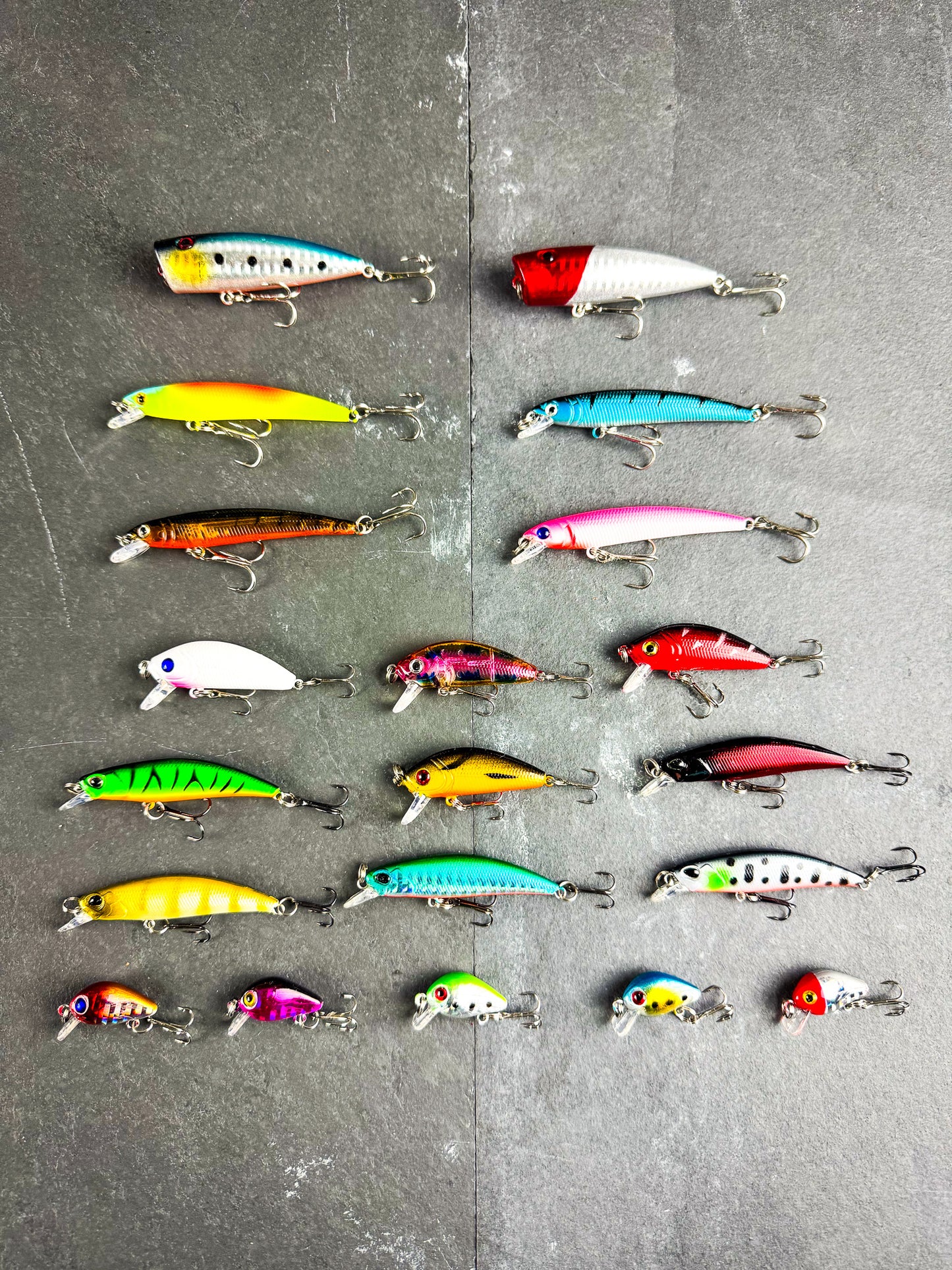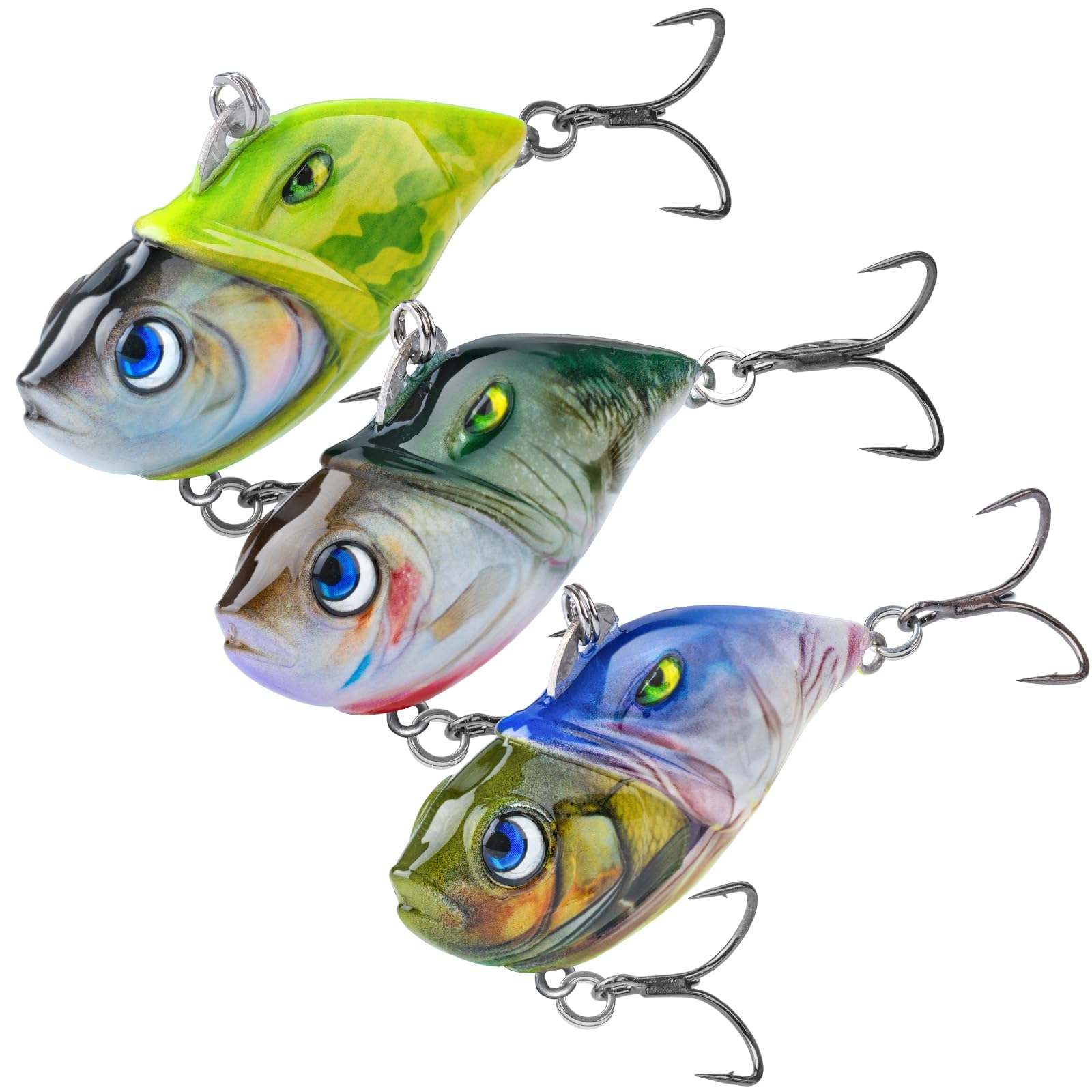7 Must-Have Best Bass Lures for Catching Trophy-Sized Fish
Discover the Finest Methods for Picking Bass Lures for Your Following Fishing Expedition
Choosing the best bass Lures can significantly impact fishing success. Anglers must consider different elements, such as seasonal patterns and water clarity. Recognizing bass behavior is essential (Best Bass Fishing Lures). Choosing Lures that resemble natural target can lead to better results. Several are unclear about the finest strategies to execute. What approaches should one prioritize to improve their angling experience? The solutions hinge on taking a look at certain conditions and adjusting as necessary
Comprehending Bass Behavior and Habitat
Understanding the subtleties of bass habits and habitat is important for any type of angler intending to improve their fishing success. Bass are often located in various settings, including reservoirs, lakes, and rivers, where they seek framework such as submerged rocks, plant life, and fallen trees. Their actions is heavily affected by water temperature, light levels, and readily available forage.
During warmer months, bass have a tendency to be extra active, frequently populating shallower waters, while in cooler months, they pull back to deeper areas. Additionally, bass display patterns of feeding, commonly being much more hostile during dawn and sunset. They are opportunistic killers, victimizing smaller fish, insects, and shellfishes. Recognizing these elements can assist fishermens recognize prime fishing places, along with the very best times to fish. Acknowledging bass actions in regard to their environment is important for effective angling, assisting fishermens in making educated choices about where to cast their lines.
Matching Lures to Seasonal Issues
As anglers adjust their methods to altering periods, matching Lures to seasonal problems becomes a vital approach for enhancing angling success. In springtime, when bass are arising from winter inactivity, fishermens often use spinnerbaits and shallow-running crankbaits to resemble the motions of target. Summer season demands a shift to topwater Lures or soft plastic worms, as bass seek shade and cooler waters. Throughout the autumn, when bass are fattening up before wintertime, bigger Lures that mimic baitfish can be effective. Winter season asks for a much more refined technique; jigs and slow-moving finesse lures often generate much better outcomes as bass become tired. Understanding these seasonal patterns aids fishermens pick the ideal attractions, thus enhancing their chances of an effective catch. By lining up attraction choices with the natural habits of bass throughout the year, fishermens can maximize their fishing experience and boost their total success on the water.
The Importance of Shade Selection
Color choice plays an important duty in bass fishing, as it can significantly influence a fisher's success. Variables such as water clearness, seasonal changes, and the certain choices of different bass species all affect which shades are most efficient. Comprehending these elements enables anglers to make enlightened choices that boost their fishing experience.
Water Quality Factors To Consider
When the water clarity differs, selecting the right bass attraction shade comes to be critical for drawing in fish. In clear water, all-natural colors such as shad or bluegill patterns often tend to be more efficient, as they imitate the target bass are accustomed to seeing. Conversely, in dirty or stained water, brighter shades like chartreuse or fire tiger can enhance exposure, making it less complicated for bass to find the attraction. The comparison between the lure and the surrounding setting plays a significant duty in angling success. Anglers should additionally consider the moment of day; lighter shades may function better in bright sunshine, while darker shades can be more reliable throughout low-light problems. Adjusting appeal color to water clarity maximizes the possibilities of an effective catch.
Seasonal Shade Patterns
Exactly how do seasonal adjustments influence bass habits and appeal performance? As temperatures shift throughout the year, bass adjust their feeding habits and preferred environments, making color option vital for successful angling. In springtime, when bass spawn, bright colors like chartreuse can draw in attention. Summertime often ask for even more all-natural shades, such as eco-friendly pumpkin or shad patterns, as bass seek to mix in with their environments. During autumn, dynamic shades like orange and red imitate the altering vegetation, tempting bass as they plan for winter. In winter season, subdued tones such as white or grey might be a lot more reliable, as bass end up being inactive. Inevitably, comprehending seasonal color scheme allows anglers to choose Lures that resonate with bass's current behavior, enhancing their chances of success.

Species-Specific Preferences
Recognizing species-specific preferences is crucial for fishermens looking to optimize their appeal option. Various bass species, such as largemouth and smallmouth, display unique color choices based upon their environment and feeding behaviors. Largemouth bass frequently favor darker tones, especially in dirty waters, where shades like dark and black green simulate all-natural target. In comparison, smallmouth bass are most likely to react to brighter colors, such as chartreuse and orange, particularly in clear waters. Furthermore, water clearness and light conditions can influence these preferences, making it crucial for that site fishermens to adjust their appeal color accordingly. By considering why not try this out these species-specific choices, fishermens can boost their possibilities of a successful fishing expedition, ultimately improving their general experience on the water.
Choosing the Right Lure Type for Different Situations
Selecting the suitable lure kind for different fishing scenarios is important for success on the water. Anglers need to consider factors such as water clarity, weather condition problems, and the bass's feeding practices. For murky water, darker-colored appeals, such as spinnerbaits or jigs, can be effective, as they create a solid silhouette. In clear water, natural-colored Lures like soft plastics or topwater baits might attract cautious bass.
When fishing in hefty cover, making use of weedless gears or heavy jigs can assist navigate via challenges without getting. Alternatively, open water situations might benefit from crankbaits or swimbaits that can cover greater ranges. Additionally, during cooler months, slower-moving Lures often tend to be extra efficient, while warmer problems may call for faster retrieves. By adapting appeal selections to certain atmospheres, fishermens enhance their possibilities of an effective catch.
Exploring With Size and Activity

Anglers commonly try out a variety of sizes and activities to figure out what works best under differing problems. A slow-moving, refined action could be excellent in chillier water, while a fast, aggressive get could be extra efficient in warmer temperatures. By carefully observing the bass's responses to these variations, fishermens can refine their technique and increase their opportunities of an effective catch. Eventually, the appropriate combination of size and activity can make a considerable distinction on the water.
Reading Water Conditions for Better Lure Options
Recognizing water problems is essential for selecting the best bass attraction. Aspects such as water quality and temperature can dramatically affect fish behavior and feeding patterns. By examining these conditions, anglers can make educated decisions that enhance their possibilities of a successful catch.
Assessing Water Clarity
Exactly how does water clearness affect the efficiency of bass attractions? Water clarity substantially impacts bass habits and the exposure of appeals. In clear water, bass Learn More Here tend to be much more mindful, making natural-colored Lures extra efficient as they resemble victim closely. Fishermens may choose lighter, subtler colors to stay clear of alarming fish. Alternatively, in dirty or stained water, brighter and more dynamic shades stand out, standing out even in low exposure conditions. Additionally, the sort of lure can vary; slower-moving Lures might function much better in clear water, while much faster, extra aggressive presentations can attract bass in murkier settings. Comprehending the clearness of the water enables anglers to select Lures that maximize their opportunities of success during their fishing expedition.
Understanding Water Temperature
As water temperature changes, it directly affects bass habits and their feeding patterns, making it essential for anglers to take into consideration when picking appeals. Generally, bass prefer warmer temperature levels, commonly between 65 ° F and 75 ° F, where their metabolic process is heightened, causing raised feeding task. In cooler water, bass end up being tired and might like slower-moving lures, such as jigs or soft plastics. Alternatively, throughout warmer months, faster presentations like crankbaits or topwater Lures can be more reliable. Anglers must likewise think about seasonal changes; for instance, springtime warming brings about hostile feeding as bass prepare to spawn. By recognizing how temperature level influences bass, anglers can make enlightened decisions on attraction selection, dramatically enhancing their opportunities of success.
Tips for Organizing and Keeping Your Tempt Collection
While numerous anglers concentrate on picking the appropriate Lures for their next angling journey, organizing and maintaining an appeal collection is similarly vital for improving efficiency and performance. A well-structured collection permits anglers to quickly locate the Lures they require, lowering time spent searching with tackle boxes.
To start, fishermens must classify Lures by kind-- crankbaits, jigs, or soft plastics-- making it easier to discover certain choices. Utilizing tackle trays or boxes with flexible compartments can assist keep every little thing arranged. Identifying containers streamlines the procedure even more, aiding fast identification.
Routine maintenance is likewise vital; anglers ought to examine Lures for indicators of wear, such as rusted hooks or damaged paint, and replace them as necessary. Cleaning Lures after each trip protects against wear and tear and makes sure durability. By executing these business and maintenance techniques, anglers can boost their fishing experience and guarantee their Lures are always in optimum problem.
Frequently Asked Questions
What Are the most effective Brand Names for Bass Lures?
The best brands for bass Lures consist of Rapala, Strike King, and Berkley. These brands are renowned for their high quality, efficiency, and technology, attracting both beginner and skilled fishermens looking for successful angling experiences.
Exactly How Many Lures Should I Tackle a Journey?
A common angling journey must include around five to 10 lures, permitting for versatility while preventing mess. This selection needs to include various kinds and shades to adjust to altering conditions and fish choices.
Can I Make My Own Bass Lures?
Yes, individuals can make their very own bass Lures making use of numerous products and strategies - Best Bass Fishing Lures. Crafting Lures enables personalization, allowing anglers to experiment with shapes, sizes, and shades to match particular angling problems and preferences
What's the Ordinary Lifespan of a Bass Tempt?
The average life expectancy of a bass appeal varies, normally lasting from a couple of months to a number of years, depending on worldly quality, use frequency, and ecological conditions. Appropriate care can substantially extend an attraction's use.
Are There Certain Lures for Night Fishing?
Yes, there specify Lures designed for night fishing. Dark colors and Lures that generate vibrations, such as spinnerbaits or jigs, usually bring in bass in low-light conditions, enhancing exposure and activating predacious reactions.
Alternatively, in dirty or stained water, brighter colors like chartreuse or fire tiger can improve exposure, making it easier for bass to identify the attraction. Bigger Lures can attract bigger bass, while smaller Lures might be much more effective for capturing smaller fish. Furthermore, the type of attraction can vary; slower-moving Lures might function better in clear water, while faster, more hostile discussions can entice bass in murkier settings. As water temperature level fluctuates, it directly influences bass habits and their feeding patterns, making it essential for fishermens to take into consideration when selecting lures. While many anglers concentrate on choosing the appropriate Lures for their next angling journey, maintaining an appeal and organizing collection is equally important for boosting effectiveness and performance.